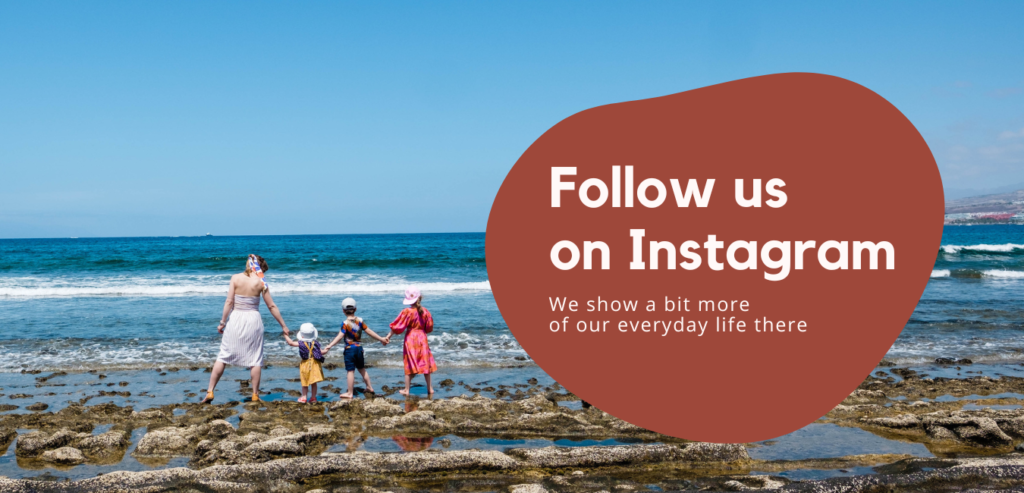It doesn’t matter whether we’re by the Vistula River with our dog for a walk, on a trail in the Karkonosze Mountains, kayaking in Liwiec, or climbing a volcano in Indonesia. Everywhere in nature, the same principles apply: Leave No Trace. And that’s what we teach our children.
What’s it all about exactly? Why do I believe that every child should know these 7 simple outdoor principles? See for yourselves.
We love being in nature. We love all outdoor activities: walks in the forest, mountain treks, kayaking, diving, riding waves, camping, or long bike trips. Nature provides both peace and strength, peaceand a sense of belonging. Nowhere else do we feel as good as in nature?
Nature also helps us build our family bonds. When in nature, we are closer to each other; our family time becomes something different, more qualitative, denser, something uniquely ours. We spend a lot of time in nature, as we try to show you on our blog, Facebook, or in our daily Instagram updates – the outdoors is like our second home.
And since it’s our second home, we strive to take care of it. So, I decided to share with you the 7 principles of Leave No Trace, which we teach our children. I deeply believe that…
Nobody is too small to care for nature!
But to care for something, you must first get to know it. That’s why the more often we take children into nature and teach them to care for it, the greater the chance that caring for nature will become second nature to them.
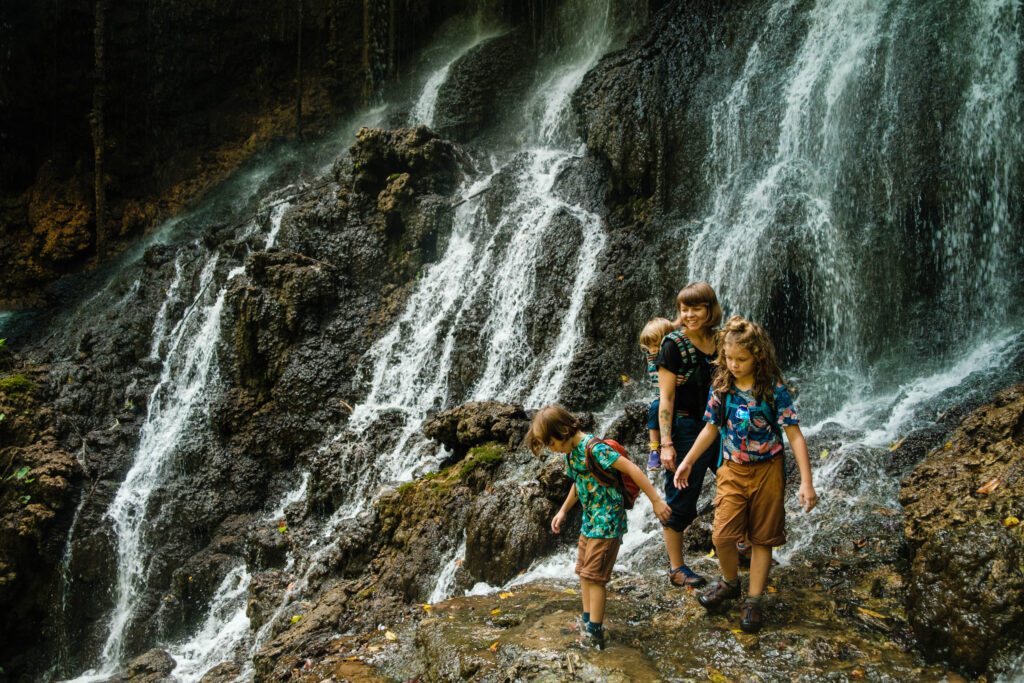
★
O tym przeczytasz
- 1 What is the Leave No Trace movement?
- 2 Below you will find the 7 Leave No Trace principles
- 3 1. Plan Ahead and Prepare Before embarking on our adventure, we explore the area we intend to visit.
- 4 2. Travel and Camp on Durable Surfaces
- 5 3. Dispose of Your Trash Properly
- 6 4. Leave Everything as You Found It (Leave What You Find)
- 7 5. Be Careful with Fire (Minimize Campfire Impacts)
- 8 6. Respect Wildlife
- 9 7. Consider Other Visitors
- 10 Stay with Us!
What is the Leave No Trace movement?
The Leave No Trace movement has a rich and long history. It was established in 1960 in the United States. It was a response to the growing problem of pollution and destruction of the natural environment due to the increasing number of people using recreational areas. In response to these issues, organizations such as the National Park Service, United States Forest Service, and Bureau of Land Management jointly developed the Leave No Trace principles to promote responsible behaviour during travel and outdoor stays. Since then, the Leave No Trace movement has spread to other countries and become an important element of environmental education and conservation worldwide.



★
Below you will find the 7 Leave No Trace principles
We’ve adapted these principles a bit for families with children. I haven’t changed the main principles, but I’ve provided a few examples from our lives to make it easier for you to explain them to children.
1. Plan Ahead and Prepare Before embarking on our adventure, we explore the area we intend to visit.
We look for information about regulations, nature protection, weather forecasts, and potential hazards. We adjust our equipment to the conditions to ensure our safety and protect the environment we’re heading into.
Our Family Tips:
- Involve children in trip planning – show them where you’re going, and what you’ll be doing, and let them try to assess what needs to be taken (e.g., sandals or hiking shoes, a small lunchbox or something larger, etc.).
- Show children what you might encounter on the trail: interesting animals or plants, come up with simple tasks related to finding them, once you’re there. We usually check the weather on the international AccuWeather website – one of the most accurate weather forecasts.

★
2. Travel and Camp on Durable Surfaces
We stick to marked trails to avoid disturbing delicate ecosystems. We avoid shortcuts and walking on plants (some of them might be protected). We choose camping spots that are either developed and resilient to our presence or have been designated for this purpose.
Our Family tips:
- You can find a list of bushcraft-survival areas covered by the “Camp in the Forest” program, where you can legally set up camp in Poland, on the State Forests website – I used this map, among others, when planning a forest girls’ camp with Mania.
- It’s clear that children would want to explore a new place from every possible angle: climb a tilted tree, throw stones into a mountain stream, or go off the designated trail because they just saw something interesting. That’s perfectly normal. The only thing that helps here is an explanation. Repeatedly explaining why the rule of staying on the trail is important (explaining that we’re walking in someone’s home and we’re guests helps in our case).

★
3. Dispose of Your Trash Properly
We don’t leave any trash in the natural environment. Never. We always take everything we bring with us, including organic waste (you never know if a banana peel or nuts from another country might disrupt the local ecosystem) and tissue paper for when nature calls (we know that situations like this happen, especially with kids). We make sure to dispose of trash in appropriate places, such as trailside bins, or we carry it with us off the trail and dispose of it in designated areas (for instance, we carried all our trash from a 3-day trek in the Rainbow Mountains in Iceland).
Our Family Tips:
- For kids, you don’t really need to explain this rule – they already understand perfectly that you just can’t litter. Period. Nobody wants to live in a trash-filled place afterwards. If you need some extra support here, watch fantastic documentaries with your kids produced by BBC Earth or National Geographic on Netflix. Seeing a turtle tangled in plastic netting or an injured wild animal trying to get into an abandoned glass jar of beans can really leave an impression.
- I also recommend carrying reusable waterproof trash bags with you, which you can wash in the laundry – when rolled up, they take up little space, and when filled with trash, you can simply attach them to your backpack and empty them at designated disposal spots off the trail.
- Instead of disposable plastic bags and PET water bottles, we always try to bring our own lunchboxes, water bottles, and hydration packs for the kids. We aim to drink tap water whenever possible and if not, we always fill our water bottles before heading out on the trail and buy 1-2 large plastic bottles (instead of several small ones) to refill the water bottles (to keep track of how much water each child drinks).
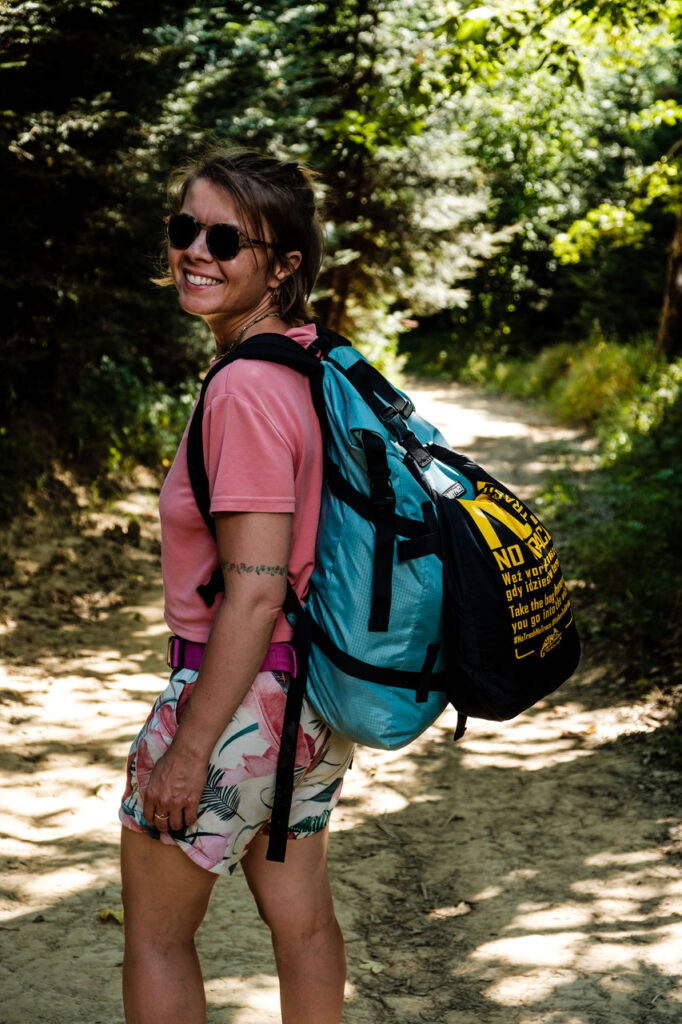

★
4. Leave Everything as You Found It (Leave What You Find)
We don’t remove, collect, or destroy elements of the natural environment. We leave plants, rocks, and other objects as we find them. This allows others to enjoy their natural beauty.
Our Family Tips:
- While not littering in nature is obvious for our children, not taking various natural wonders is a bit harder to grasp. I won’t pretend that we don’t take anything from nature – our kids have a collection of treasures including stones, dried leaves, or beach-found amber.
- However, we ensure our kids don’t damage anything under protection or covered by additional restrictions (it’s worth checking the details – for example, in Thailand, under no circumstances can you export corals or certain shell species – attempting to do so might lead to imprisonment; on Iceland, it’s obvious for us not to walk on moss).
- We don’t take animal bones, antlers, or protected plant species. In national parks, we don’t pick or take anything.

★
5. Be Careful with Fire (Minimize Campfire Impacts)
We love warming up by the campfire while camping, but of course, caution is essential. That’s why we either use designated fire pits or we thoroughly prepare the ground underneath and adhere to safety rules. We always make sure the fire is completely extinguished before leaving the site.

★
6. Respect Wildlife
Admiring wildlife, especially with children, is one of the most beautiful aspects of outdoor life. It’s clear to us that animals need their space. We observe them from a distance and don’t disturb them in their natural habitat. We don’t feed wild animals (like monkeys in Thailand – unfortunately quite common among tourists – or deer in the forest), as it can disrupt their natural habits and pose a threat to both them and us.
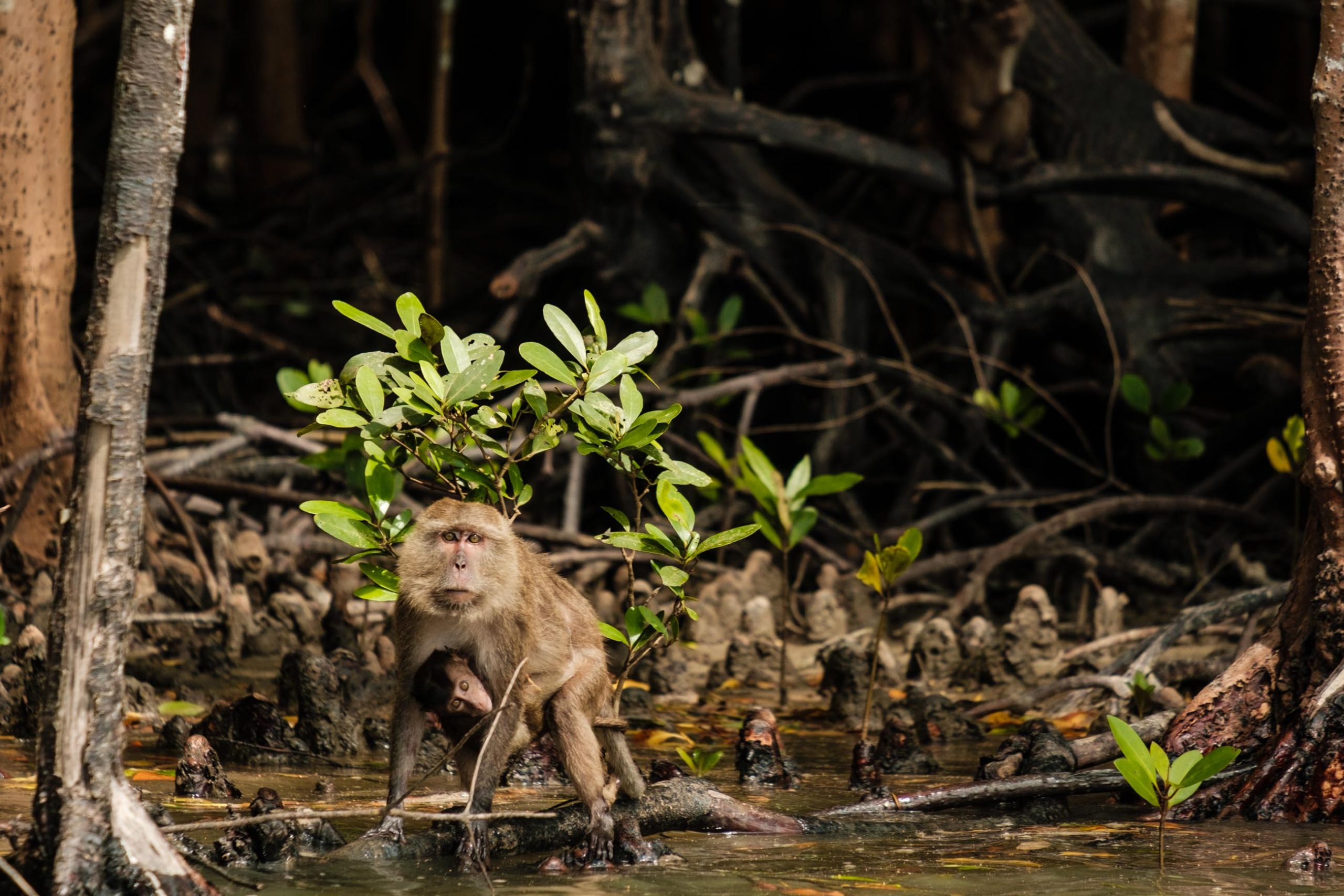
★
7. Consider Other Visitors
During our outdoor adventures, we remember that our family isn’t the only one on the trail. We teach children to respect other tourists, for instance, by giving way on the trail when someone is walking faster. We ensure our kids don’t behave too loudly (which, of course, can be challenging at times, as kids naturally have a lot of energy). We don’t play music loudly, try to have conversations at a regular volume without shouting. We understand that we might disrupt the silence and peace of the surrounding nature. And many people come precisely for that peace and quiet, right?
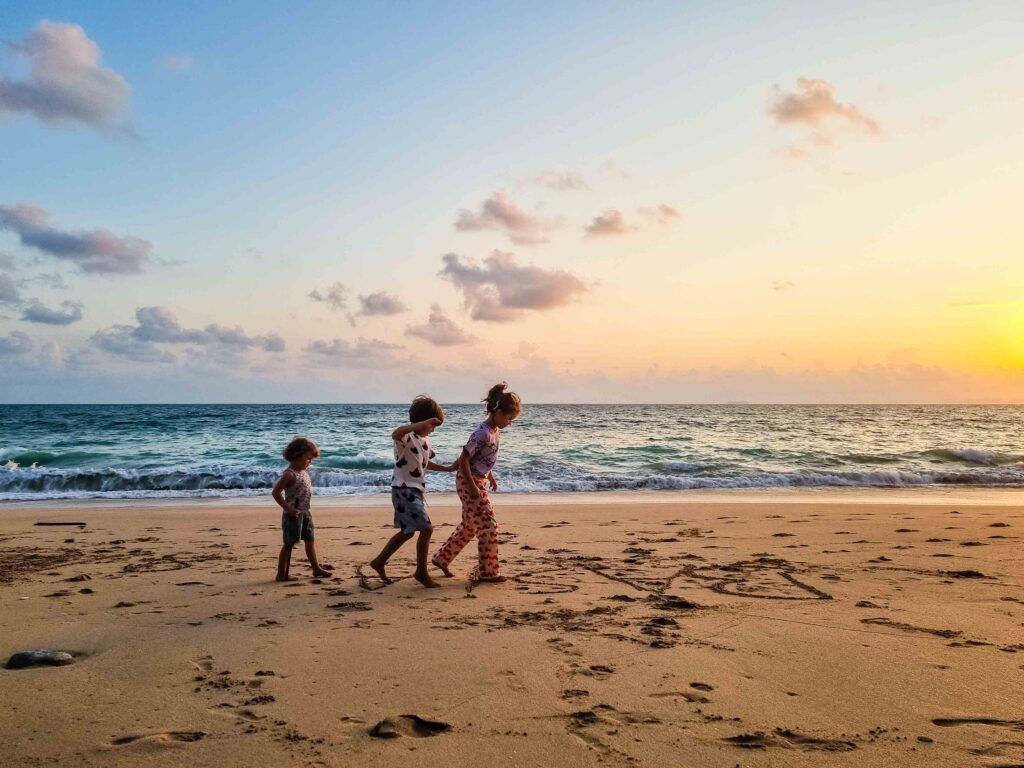



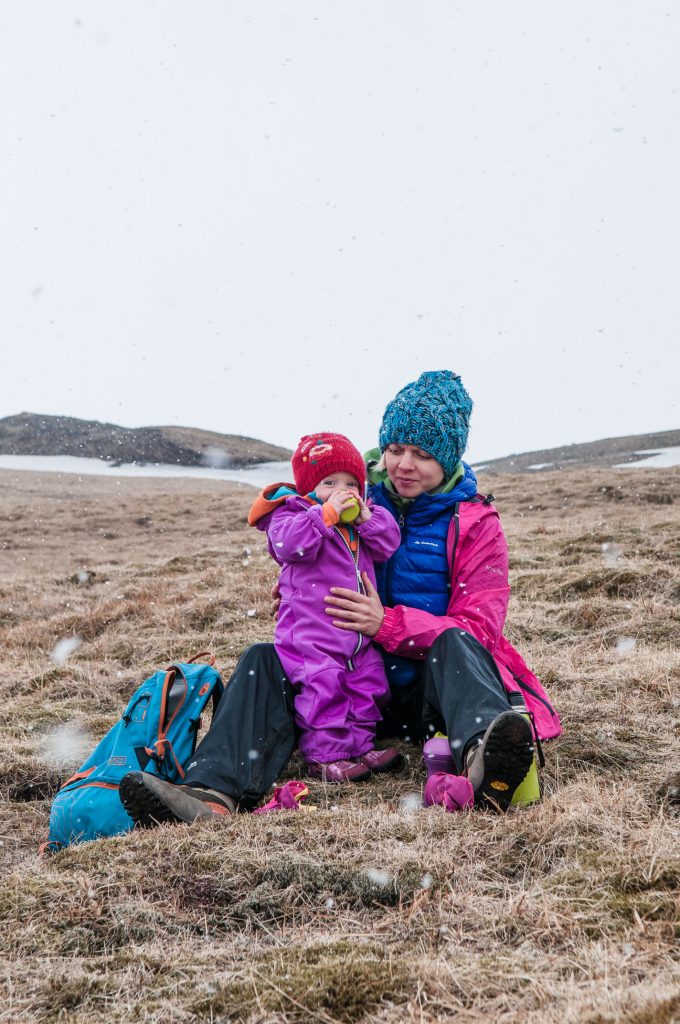
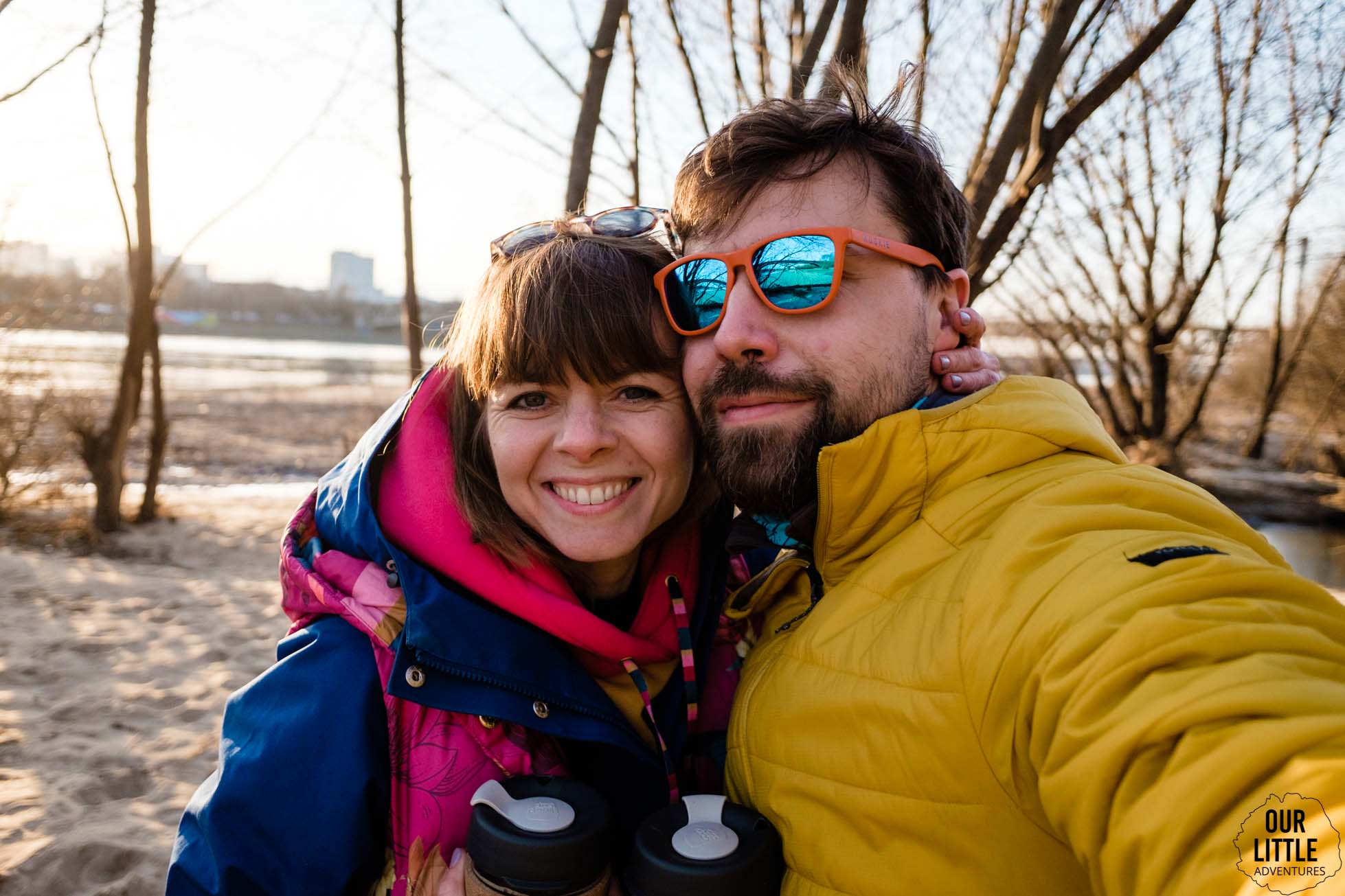
★

